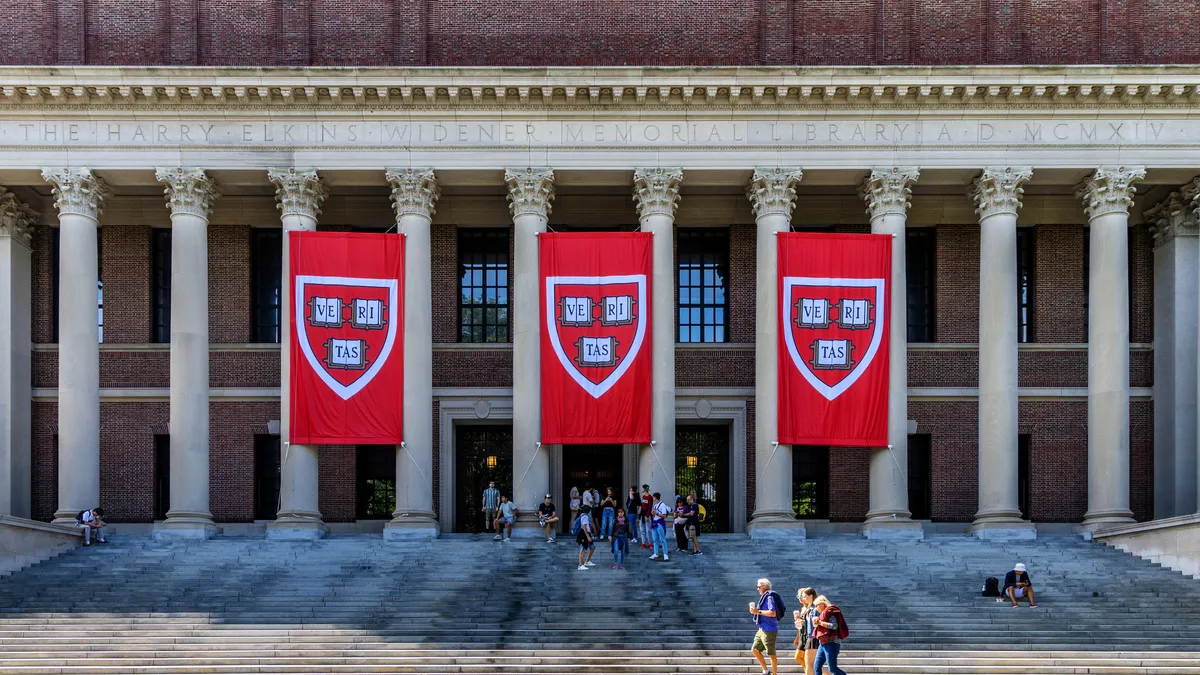Robin Boston wasn’t expecting her job to help her buy a house when she started working for the University of Maryland, Baltimore in 2016. But two years after joining the university’s Office of Philanthropy, Boston bought her first home, less than a mile from the campus.
The best part? The university made the down payment.
“I must have looked at 20 houses, all in neighborhoods close to the university,” said Boston, an accountant in the university's Office of Philanthropy. “Some were just too large. Some were too small. I was like Goldilocks.”
Then she found one that was just right, with bedrooms for her children and a backyard. Boston was already pre-approved for a loan and had completed the homeownership counseling program that the university requires. The university paid $16,000 and the city of Baltimore contributed $2,500 towards the down payment as part of its Live Near Your Work program, and Boston signed the contract in May 2018.
Before the move, she lived “maybe three miles from work,” Boston said. “I could walk, but now I’m less than a mile.”
Boston is among 75 University of Maryland Baltimore employees who have taken advantage of the homeownership incentive program since it launched in 2018.
Under the terms of the program, the university contributes $16,000 toward the down payment on a home, and the city of Baltimore kicks in up to $2,500. Employees must work at the university at least halftime, select a property in one of nine nearby neighborhoods, and commit to stay in the home for five years.
The average sale price for a home purchased through the program is $192,884.
“Our goals were to revitalize the neighborhoods near the university and offer an awesome benefit to our employees,” said Dawn Rhodes, the institution’s chief business and finance officer and senior vice president. “This is our community, and we care enough that we want to invest in it.”
The University of Maryland Baltimore set aside $2 million for the program in 2018 and has spent $1.2 million so far, according to Rhodes. Five years into the program, university officials celebrated spending the first $1 million and heard employees “talking about the appreciation they’ve seen in the house and the satisfaction of knowing they can pass that wealth on to their families,” she said.
In Baltimore, more than a hundred local employers — including the university— will help employees with the purchase of a home. A city-wide initiative called Live Baltimore helps interested employees get familiar with the area by giving three-hour neighborhood tours. Boston took a tour when she was looking for a home in 2018.
“Some of the brownstone-style houses here are really large,” Boston said. “Some are three floors tall. I got tired just looking at them.”
Buying a home is the biggest investment that most people make. And for many, buying a home leads to putting down deeper roots in their community. The University of Rochester, in New York, launched its Home Ownership Incentive Program in 2008 to build employee retention.
Like the university program in Baltimore, University of Rochester employees must work at least 20 hours a week and agree to live in the home for five years. The New York institution also imposes a household income cap for the program — under $135,000 in 2022.
“We want university employees to continue working for us and build a life here,” said Sara Miller, the university's associate vice president for public relations.
As the employer of 30,000 staff and faculty, the university and the city of over 211,000 residents are deeply intertwined, Miller said. “If we can continue this program, it will add to the vibrancy and momentum the city has going right now. It’s one of our contributions to making the area an even stronger place.”
For the program’s first 16 years, the university contributed $9,000 toward down payments or closing costs, and 565 employees purchased homes in a few select neighborhoods of the city.
But this summer, the program expanded substantially. As of August, university employees can get $20,000 toward home purchases anywhere in the city. The university contributes $10,000, the city $5,000 and participating lenders another $5,000.
The university has spent almost $1.7 million to facilitate employee home purchases since the program’s launch, Miller said.
“This is about community building for us, for the city and to some degree the lenders,” Miller said. “The city of Rochester has a lot of positive activity taking place right now.”
A handful of similar programs exist across the country. The University of Alabama at Birmingham helps full-time employees buy homes in the North Titusville neighborhood with up to $15,000 in grants for down payments and closing costs. Occidental College offers tenured faculty up to $150,000 to purchase homes within 50 miles of its campus in Los Angeles, one of the country's most expensive housing markets.
Most programs require homebuyers to complete housing counseling certified by the U.S. Department of Housing and Urban Development. The programs cover issues like avoiding foreclosure, managing finances and maintaining a home.
Eligibility for such programs varies. But in Baltimore, the incentive program has had an outsized benefit for women who work for the university — particularly African American women. Of 75 employees who have purchased homes through the program, 56 are women and 37 are African American.
“We were not targeting any particular group,” said Rhodes. “But from a social justice standpoint, the largest beneficiary group is African American women. Generational wealth often starts with home ownership.”
That fact is not lost on Boston. As a Baltimore native, she is already rooted in her community, but now her home is an asset she can share with her family.
“Now I have something to pass on to my grandkids,” Boston said.






















